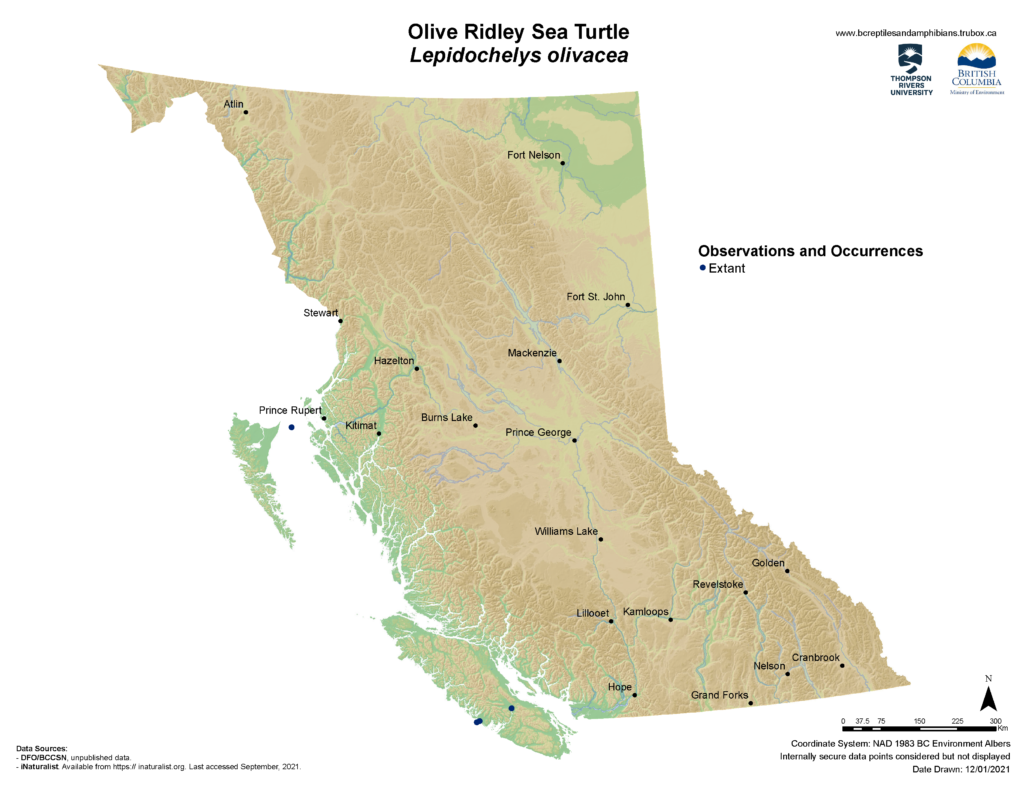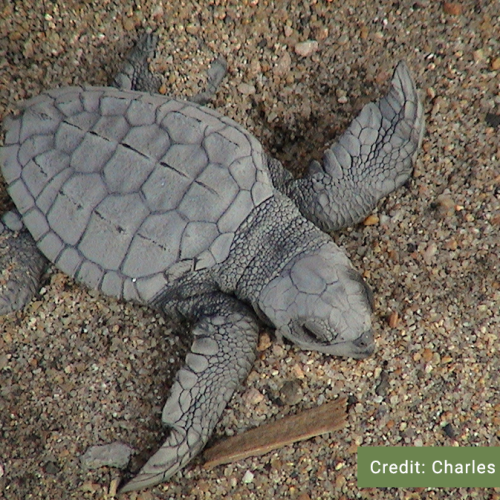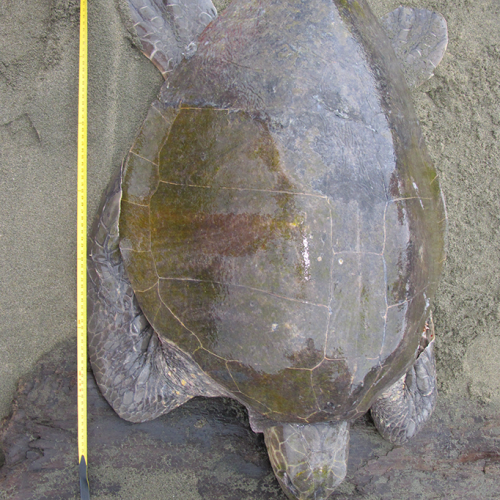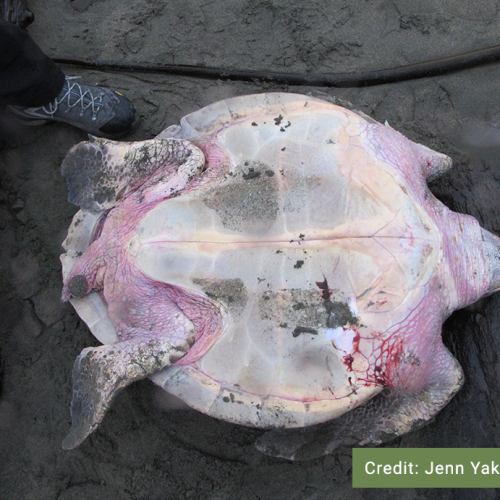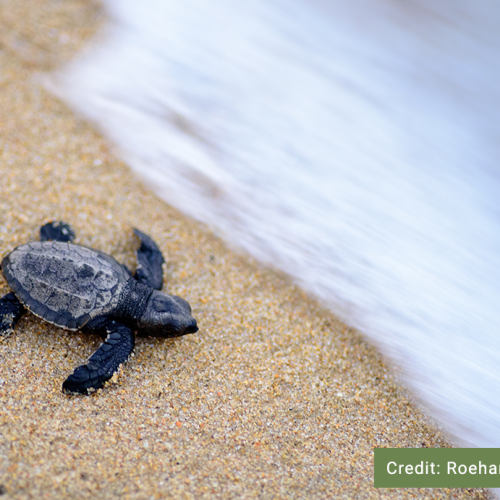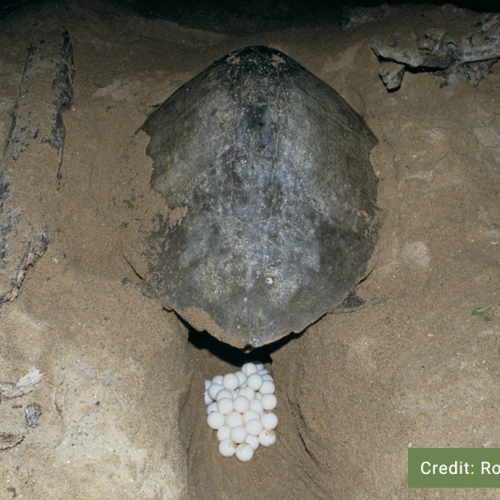Credit: Organization for Tropical Studies
Olive Ridley Sea Turtle
Lepidochelys olivacea
Description
Other names: Pacific Ridley Sea Turtle
The Olive Ridley Sea Turtle is among the smallest species of sea turtles in the world, reaching a maximum weight of 45 kg and maximum length of 75 cm. True to their name, they are olive-gray in colour with a heart-shaped carapaceDefinition:The hard upper shell of a turtle, crustacean, or arachnid. that has 5-9 pairs of costal scuteDefinition:Individual plates of the carapace in turtles. Also often used interchangeably for scales in reptiles. . The limbs are modified into flippers, with each having one or two claws. The size and shape of Olive Ridley Sea Turtles is highly variable across their broad distribution, with the largest individuals found in West Africa.
Listen to the Indigenous words for “turtle” here!
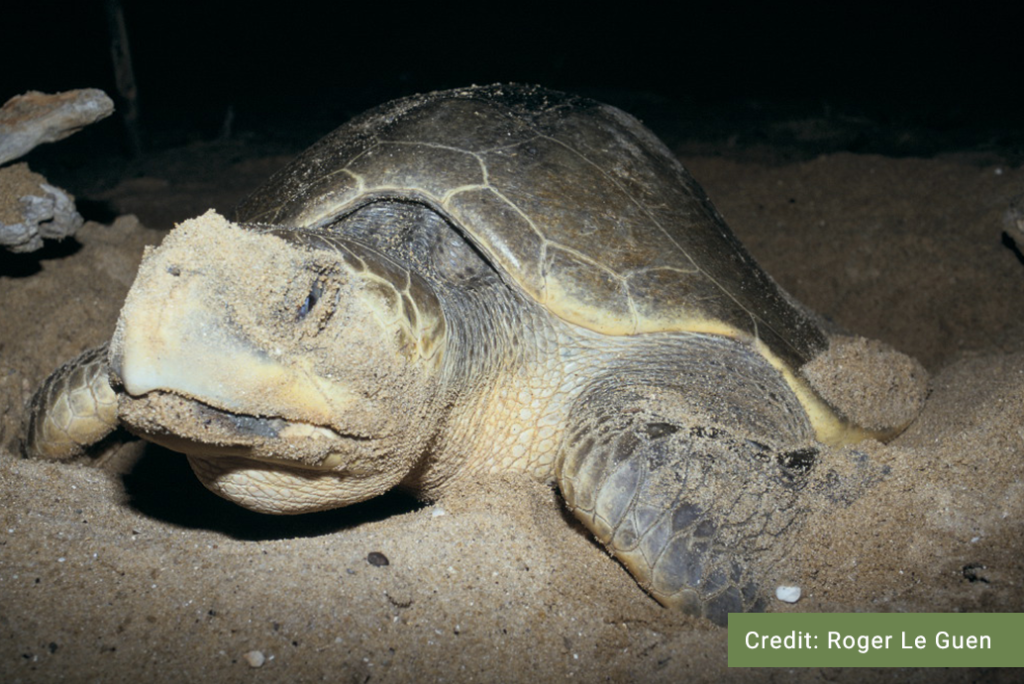
Similar Species
In Canada, the Olive Ridley Sea Turtle may be confused with the Pacific Leatherback Sea Turtle, the Green Sea Turtle, or the Loggerhead Sea Turtle; although all sea turtle species are accidental in Canada and are generally very rare. The Leatherback Sea Turtle has no scutes on the shell, but is instead leathery and lacks the bright colouration of the Green Sea Turtle. The Green Sea Turtle may be coloured similarly to the Olive Ridley Sea Turtle, but they are generally much larger and have 4 pairs of costal scutes, whereas Loggerhead Sea Turtles usually have 5 or more.
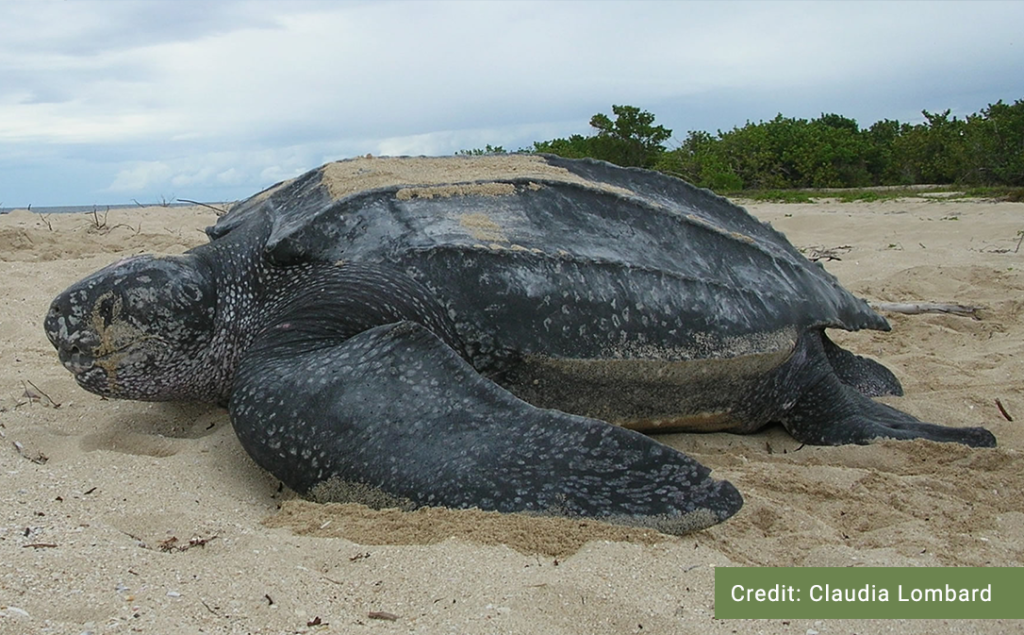
Pacific Leatherback Sea Turtle
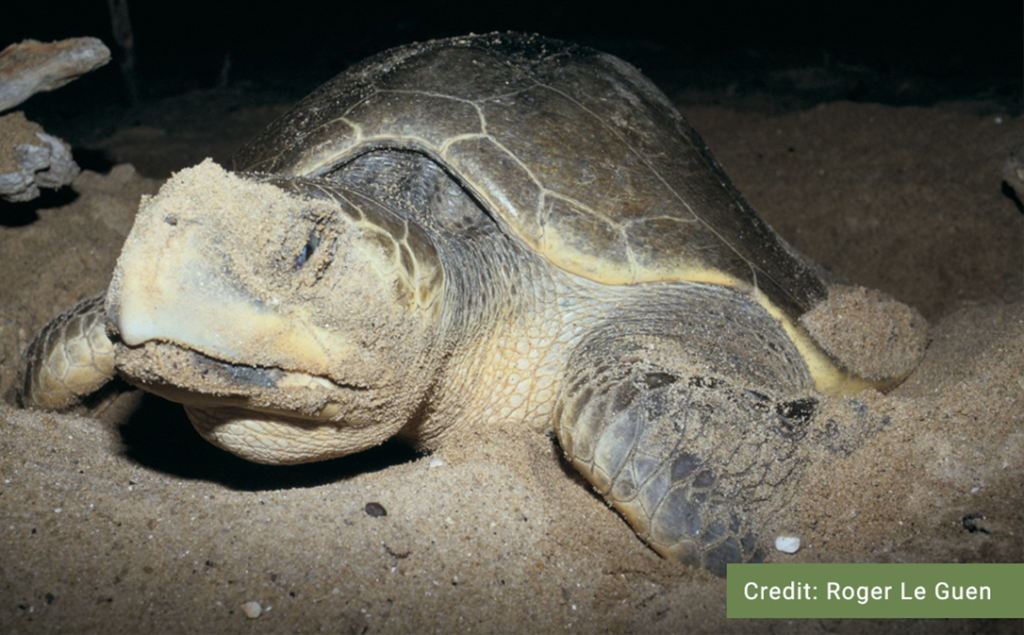
Olive Ridley Sea Turtle
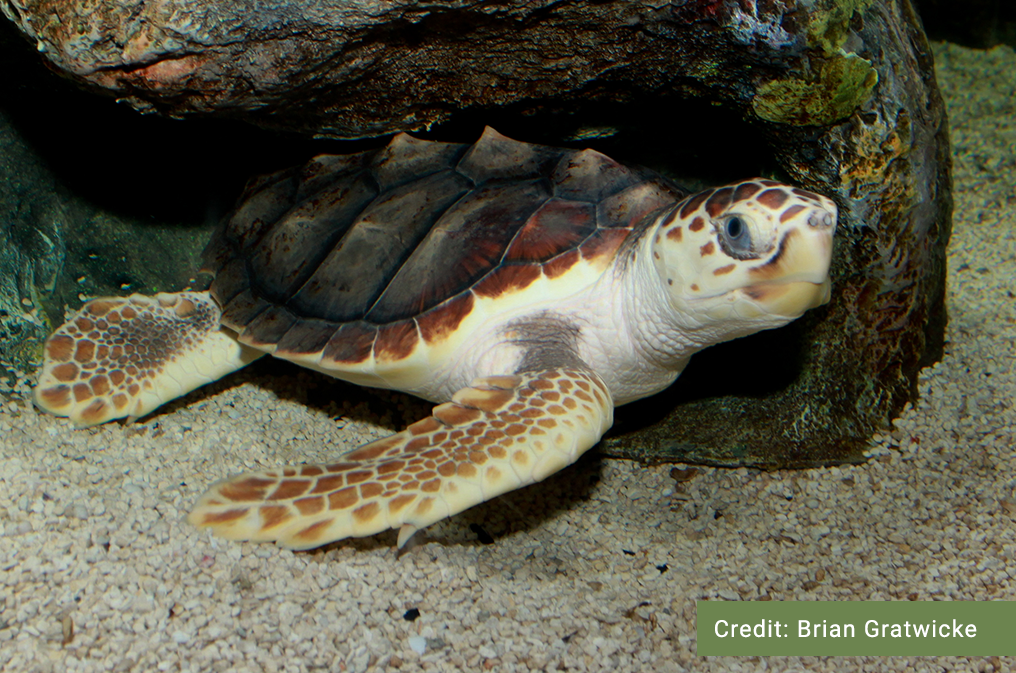
Loggerhead Sea Turtle
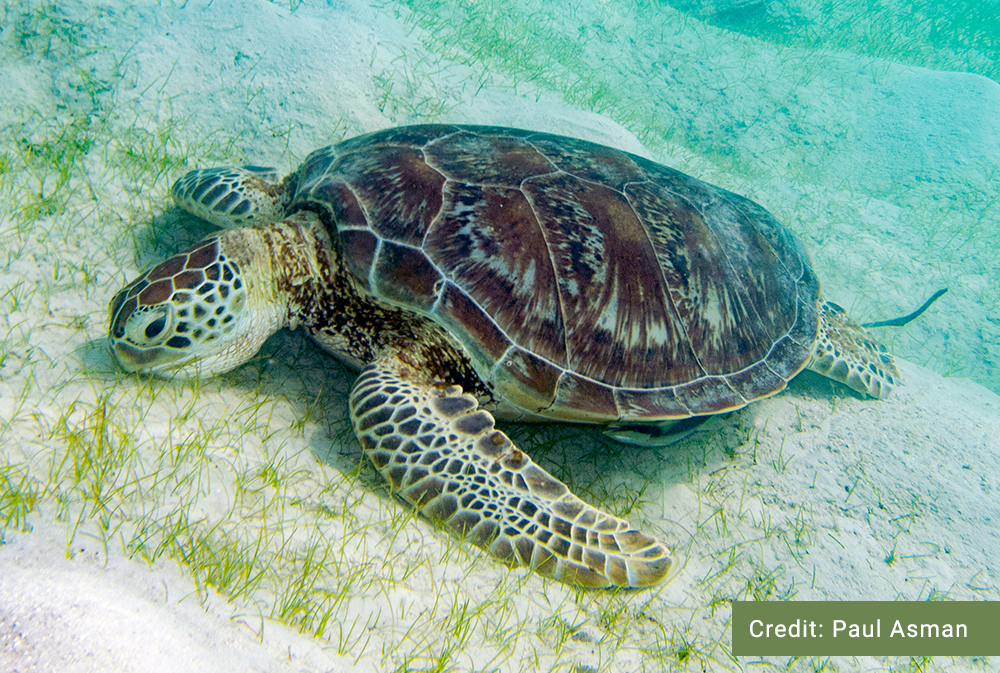
Green Sea Turtle
Distribution
Habitat
Reproduction
The Olive Ridley Sea Turtle has one of the most incredible nesting habits in the natural world. Large groups of the turtles will gather offshore of the nesting beaches, and all at once, hundreds of thousands of the turtles will swim ashore to nest. In some cases, the densities of nesting females may be so high that previously laid clutches of eggs can be dug up by other females excavating their own nest. This phenomena is known as “arribada” which is Spanish for arrival. Arribada nesting behaviour is only know to the genus Lepidochelys which includes the Olive Ridley Sea Turtle and the Kemp’s Ridley Sea Turtle. Other sea turtles will nest in groups, but no other species have been observed nesting in such large congregations or with such precise synchrony. Solitary nesting is also common for the Olive Ridley Sea Turtle and has been recorded in over 40 countries across the world, but arribada nesting has only been recorded on a handful of beaches in the world. Female Olive Ridley Sea Turtles nest every year, and up to 3 times per season, laying clutches of up to 100 eggs. Like Green Sea Turtles, the sex of the hatchlings is determined by the nest temperature. Immediately after hatching, juveniles make their way to the sea.
Diet
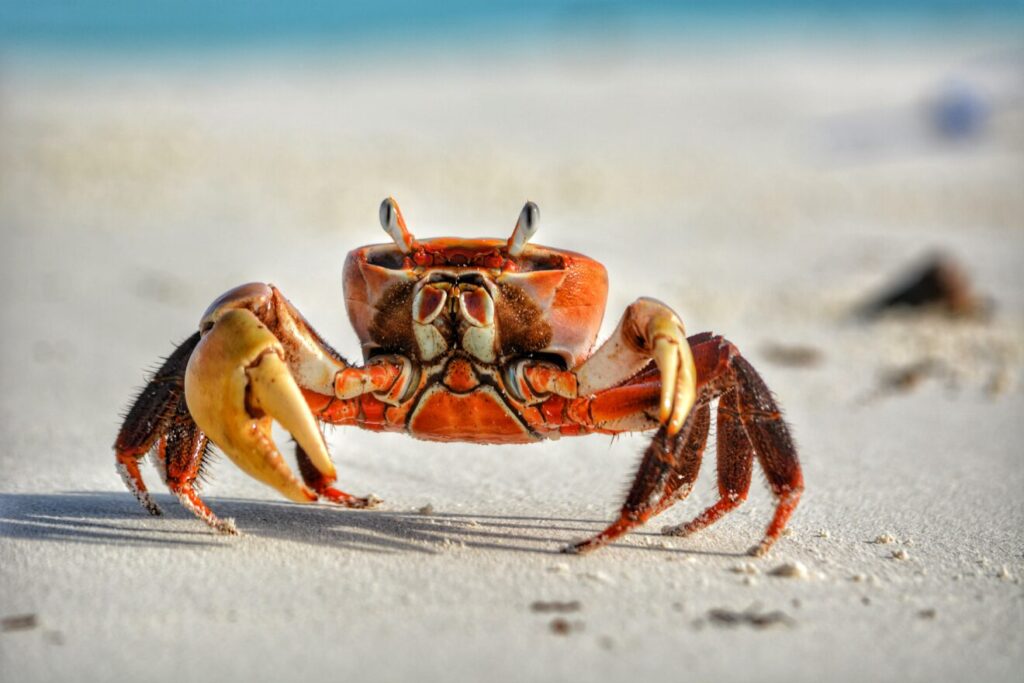
Conservation Status
Global: G3 (2009)
Provincial: SNA (2018)
BC List: Accidental
Learn more about conservation status rankings here
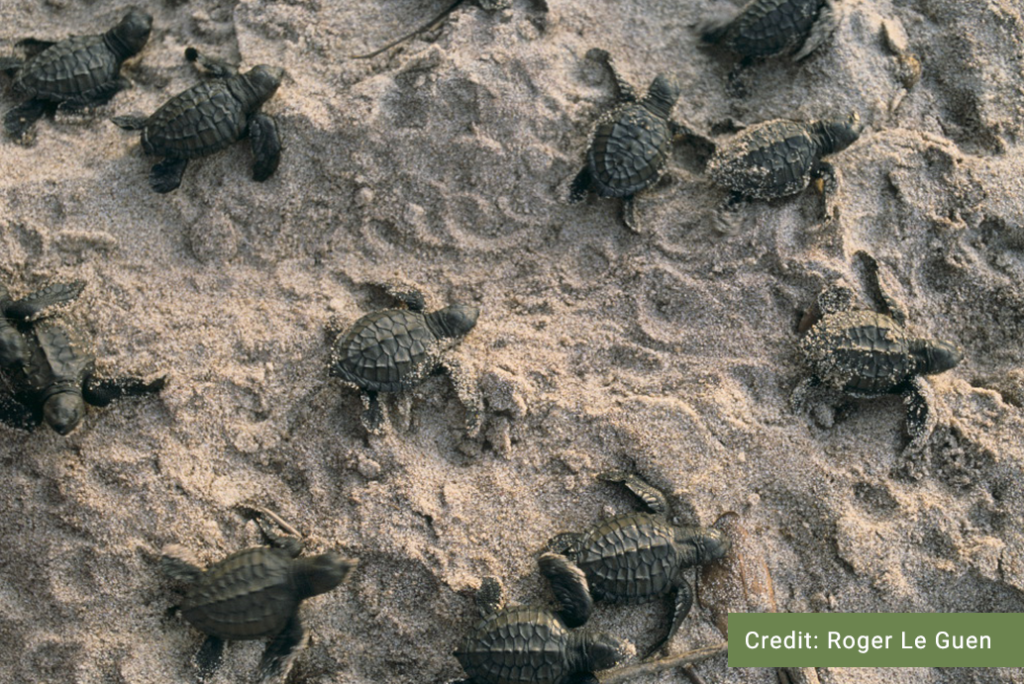
Threats
Did You Know?
Species Account Author: Marcus Atkins
B.C. Conservation Data Centre. 2009. Species Summary: Lepidochelys olivacea. B.C. Minist. of Environment. Available:https://a100.gov.bc.ca/pub/eswp/ (accessed Jun 22, 2021).
B.C. Conservation Data Centre. 2021. BC Species and Ecosystems Explorer. B.C. Minist. of Environ. Victoria, B.C. Available: https://a100.gov.bc.ca/pub/eswp/ (accessed Jun 22, 2021).
http://linnet.geog.ubc.ca/efauna/Atlas/Atlas.aspx?sciname=Lepidochelys%20olivacea
https://www.fisheries.noaa.gov/species/olive-ridley-turtle

